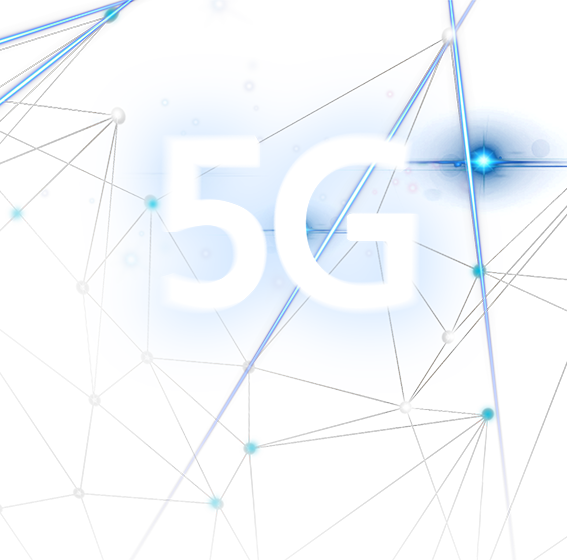Not long ago, the mid-year answer sheet for the joint development of Hengqin between Zhuhai and Macao was slowly unfolding. One of the cross-border optical fibers attracted attention. It passed through Zhuhai and Macao to realize computing power interconnection and resource sharing from Macao to Hengqin, and build an information channel. Shanghai is also promoting the upgrading and transformation project of the "optical into copper back" all-fiber communication network to ensure high-quality economic development and better communication services for residents.
With the rapid development of Internet technology, users' demand for Internet traffic is increasing day by day, how to improve the capacity of optical fiber communication has become an urgent problem to be solved.
Since the appearance of optical fiber communication technology, it has brought about major changes in the fields of science and technology and society. As an important application of laser technology, laser information technology represented by optical fiber communication technology has built the framework of modern communication network and become an important part of information transmission. Optical fiber communication technology is an important carrying force of the current Internet world, and it is also one of the core technologies of the information age.
With the continuous emergence of various emerging technologies such as the Internet of Things, big data, virtual reality, artificial intelligence (AI), fifth-generation mobile communications (5G) and other technologies, higher demands are placed on information exchange and transmission. According to research data released by Cisco in 2019, global annual IP traffic will increase from 1.5ZB (1ZB=1021B) in 2017 to 4.8ZB in 2022, with a compound annual growth rate of 26%. Faced with the growth trend of high traffic, optical fiber communication, as the most backbone part of the communication network, is under tremendous pressure to upgrade. High-speed, large-capacity optical fiber communication systems and networks will be the mainstream development direction of optical fiber communication technology.

Development History and Research Status of Optical Fiber Communication Technology
The first ruby laser was developed in 1960, following the discovery of how lasers work by Arthur Showlow and Charles Townes in 1958. Then, in 1970, the first AlGaAs semiconductor laser capable of continuous operation at room temperature was successfully developed, and in 1977, the semiconductor laser was realized to work continuously for tens of thousands of hours in a practical environment.
So far, lasers have the prerequisites for commercial optical fiber communication. From the beginning of the invention of the laser, the inventors recognized its important potential application in the field of communication. However, there are two obvious shortcomings in laser communication technology: one is that a large amount of energy will be lost due to the divergence of the laser beam; the other is that it is greatly affected by the application environment, such as the application in the atmospheric environment will be significantly subject to changes in weather conditions . Therefore, for laser communication, a suitable optical waveguide is very important.
The optical fiber used for communication proposed by Dr. Kao Kung, the Nobel Prize winner in physics, meets the needs of laser communication technology for waveguides. He proposed that the Rayleigh scattering loss of glass optical fiber can be very low (less than 20 dB/km), and the power loss in optical fiber mainly comes from the absorption of light by impurities in glass materials, so material purification is the key to reducing optical fiber loss Key, and also pointed out that single-mode transmission is important to maintain good communication performance.
In 1970, Corning Glass Company developed a quartz-based multimode optical fiber with a loss of about 20dB/km according to Dr. Kao’s purification suggestion, making optical fiber a reality for communication transmission media. After continuous research and development, the loss of quartz-based optical fibers approached the theoretical limit. So far, the conditions of optical fiber communication have been fully satisfied.
Early optical fiber communication systems all adopted the receiving method of direct detection. This is a relatively simple optical fiber communication method. PD is a square law detector, and only the intensity of the optical signal can be detected. This direct detection receiving method has continued from the first generation of optical fiber communication technology in the 1970s to the early 1990s.

To increase the spectrum utilization within the bandwidth, we need to start from two aspects: one is to use technology to approach the Shannon limit, but the increase in spectrum efficiency has increased the requirements for the telecommunication-to-noise ratio, thereby reducing the transmission distance; the other is to make full use of the phase, The information carrying capacity of the polarization state is used for transmission, which is the second generation coherent optical communication system.
The second-generation coherent optical communication system uses an optical mixer for intradyne detection, and adopts polarization diversity reception, that is, at the receiving end, the signal light and the local oscillator light are decomposed into two beams of light whose polarization states are orthogonal to each other. In this way, polarization-insensitive reception can be achieved. In addition, it should be pointed out that at this time, frequency tracking, carrier phase recovery, equalization, synchronization, polarization tracking and demultiplexing at the receiving end can all be completed by digital signal processing (DSP) technology, which greatly simplifies the hardware design of the receiver , and improved signal recovery capability.
Some Challenges and Considerations Facing the Development of Optical Fiber Communication Technology
Through the application of various technologies, the academic circles and the industry have basically reached the limit of the spectral efficiency of the optical fiber communication system. To continue to increase the transmission capacity, it can only be achieved by increasing the system bandwidth B (linearly increasing capacity) or increasing the signal-to-noise ratio. The specific discussion is as follows.
1. Solution to increase transmit power
Since the nonlinear effect caused by high-power transmission can be reduced by properly increasing the effective area of the fiber cross-section, it is a solution to increase power to use few-mode fiber instead of single-mode fiber for transmission. In addition, the current most common solution to nonlinear effects is to use the digital backpropagation (DBP) algorithm, but the improvement of algorithm performance will lead to an increase in computational complexity. Recently, the research of machine learning technology in nonlinear compensation has shown a good application prospect, which greatly reduces the complexity of the algorithm, so the design of DBP system can be assisted by machine learning in the future.
2. Increase the bandwidth of the optical amplifier
Increasing the bandwidth can break through the limitation of the frequency range of EDFA. In addition to the C-band and L-band, the S-band can also be included in the application range, and the SOA or Raman amplifier can be used for amplification. However, the existing optical fiber has a large loss in frequency bands other than the S-band, and it is necessary to design a new type of optical fiber to reduce the transmission loss. But for the rest of the bands, commercially available optical amplification technology is also a challenge.
3. Research on low transmission loss optical fiber
Research on low transmission loss fiber is one of the most critical issues in this field. Hollow core fiber (HCF) has the possibility of lower transmission loss, which will reduce the time delay of fiber transmission and can eliminate the nonlinear problem of fiber to a great extent.
4. Research on space division multiplexing related technologies
Space-division multiplexing technology is an effective solution to increase the capacity of a single fiber. Specifically, multi-core optical fiber is used for transmission, and the capacity of a single fiber is doubled. The core issue in this regard is whether there is a higher-efficiency optical amplifier. , otherwise it can only be equivalent to multiple single-core optical fibers; using mode-division multiplexing technology including linear polarization mode, OAM beam based on phase singularity and cylindrical vector beam based on polarization singularity, such technology can be Beam multiplexing provides a new degree of freedom and improves the capacity of optical communication systems. It has broad application prospects in optical fiber communication technology, but the research on related optical amplifiers is also a challenge. In addition, how to balance the system complexity caused by differential mode group delay and multiple-input multiple-output digital equalization technology is also worthy of attention.
Prospects for the Development of Optical Fiber Communication Technology
Optical fiber communication technology has developed from the initial low-speed transmission to the current high-speed transmission, and has become one of the backbone technologies supporting the information society, and has formed a huge discipline and social field. In the future, as society's demand for information transmission continues to increase, optical fiber communication systems and network technologies will evolve towards ultra-large capacity, intelligence, and integration. While improving transmission performance, they will continue to reduce costs and serve the people's livelihood and help the country build information. society plays an important role. CeiTa has cooperated with a number of natural disaster organizations, which can predict regional safety warnings such as earthquakes, floods, and tsunamis. It only needs to be connected to the ONU of CeiTa. When a natural disaster occurs, the earthquake station will issue an early warning. The terminal under the ONU Alerts will be synchronized.
(1) Intelligent optical network
Compared with the wireless communication system, the optical communication system and network of the intelligent optical network are still in the initial stage in terms of network configuration, network maintenance and fault diagnosis, and the degree of intelligence is insufficient. Due to the huge capacity of a single fiber, the occurrence of any fiber failure will have a great impact on the economy and society. Therefore, the monitoring of network parameters is very important for the development of future intelligent networks. The research directions that need to be paid attention to in this aspect in the future include: system parameter monitoring system based on simplified coherent technology and machine learning, physical quantity monitoring technology based on coherent signal analysis and phase-sensitive optical time-domain reflection.
(2) Integrated technology and system
The core purpose of device integration is to reduce costs. In optical fiber communication technology, short-distance high-speed transmission of signals can be realized through continuous signal regeneration. However, due to the problems of phase and polarization state recovery, the integration of coherent systems is still relatively difficult. In addition, if a large-scale integrated optical-electrical-optical system can be realized, the system capacity will also be significantly improved. However, due to factors such as low technical efficiency, high complexity, and difficulty in integration, it is impossible to widely promote all-optical signals such as all-optical 2R (re-amplification, re-shaping), 3R (re-amplification, re-timing, and re-shaping) in the field of optical communications. processing technology. Therefore, in terms of integration technology and systems, the future research directions are as follows: Although the existing research on space division multiplexing systems is relatively rich, the key components of space division multiplexing systems have not yet achieved technological breakthroughs in academia and industry, and further strengthening is needed. Research, such as integrated lasers and modulators, two-dimensional integrated receivers, high-energy-efficiency integrated optical amplifiers, etc.; new types of optical fibers may significantly expand system bandwidth, but further research is still needed to ensure that their comprehensive performance and manufacturing processes can reach the existing single The level of mode fiber; study various devices that can be used with the new fiber in the communication link.
(3) Optical communication devices
In optical communication devices, the research and development of silicon photonic devices has achieved initial results. However, at present, domestic related research is mainly based on passive devices, and research on active devices is relatively weak. In terms of optical communication devices, the future research directions include: integration research of active devices and silicon optical devices; research on integration technology of non-silicon optical devices, such as research on integration technology of III-V materials and substrates; further development of new device research and development. Follow up, such as integrated lithium niobate optical waveguide with the advantages of high speed and low power consumption.
Post time: Aug-03-2023








